Would you spend £25 on a box of mangoes?

During a brief window every year, grocery shops stock up sought-after South Asian mangoes
- Published
During the popular phenomenon colloquially known as mango season, the South Asian diaspora can fork out hundreds for the fruit.
But they are not the mangoes you would typically find in your local supermarket.
Each year, millions of South Asian mangoes are imported to the UK during a brief window of a few months between spring and summer.
While the fruits are considered a cash crop for farmers in South Asia, they are also highly valued here.
So what makes them so special?
When is mango season?
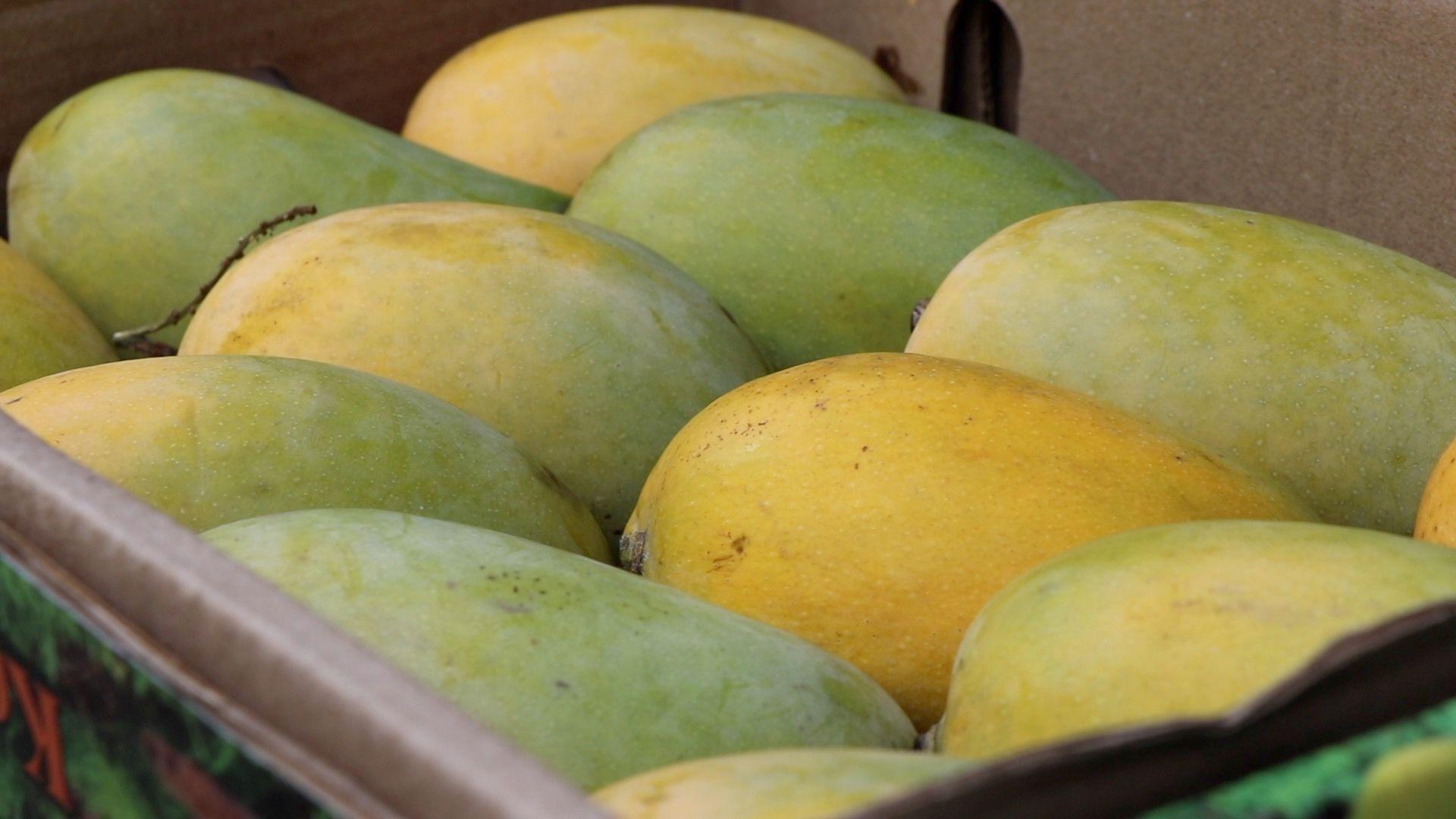
It is not uncommon to find large displays of mangoes at South Asian grocery shops during the season
Mango season typically falls between late March and July, with the peak of the season sometimes lasting just a few weeks.
The crop is heavily dependent on the weather.
In India once the monsoon rain begins, the season is over, leaving just a few weeks to buy them in the UK.
It means the window to enjoy South Asian mangoes is short - and it can be affected further by unseasonable weather.
One farmer, from Gujarat in India, said this year's strong winds and rain caused many mangoes to fall from the trees before they were ready to be picked.
And according to Reuters, the monsoon has come early, so you will have to be quick to get your hands on a box.
Where can you buy them?
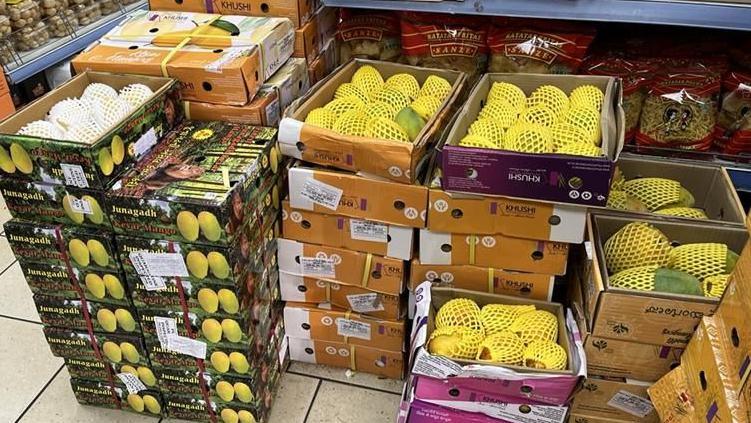
The delicate fruits come wrapped in foam netting to prevent them from being damaged in transit
These mangoes are usually bought from independent, South Asian-owned grocery stores - typically in areas of the country with a large South Asian population - where boxes of the fruit are stacked high throughout the season.
In Leicester, grocers like Shivam Pabari, who helps his family to run Shiva Shakti Foods in Belgrave, sell thousands of mangoes every year.
They are usually sold by the box-load, as according to Mr Pabari, they are more expensive to buy individually and people rarely just want one.
"In one weekend during the season, we could sell up to 600 boxes," he said.
It is not as common to find the fruit in large supermarkets, but the BBC found they are sometimes stocked as a "speciality" product in stores such as Marks & Spencer and Asda, and at online retailer Ocado.
What makes them different?

Saurabhi Bhave and her dad Mukund Vaidya travel to Leicester from Coventry to buy mangoes
The distinctive flavour of South Asian mangoes are undoubtedly the main reason they are so popular.
"The taste, the fragrance, the aroma - they're completely their own league. You have to taste them to appreciate them," says Saurabhi Bhave, from Coventry.
Unlike the mangoes you can often buy off supermarket shelves, they are much sweeter, softer and have a sometimes cream-like texture.
Ms Bhave and her family spend about £150 a year on mangoes and "can't get enough" of them.
This year, Ms Bhave and her family have already shared about eight boxes containing 12 mangoes each.
"We just can't stop ourselves. Because the window is just so short, we've got to make the most of it," she said.
'A taste of home'
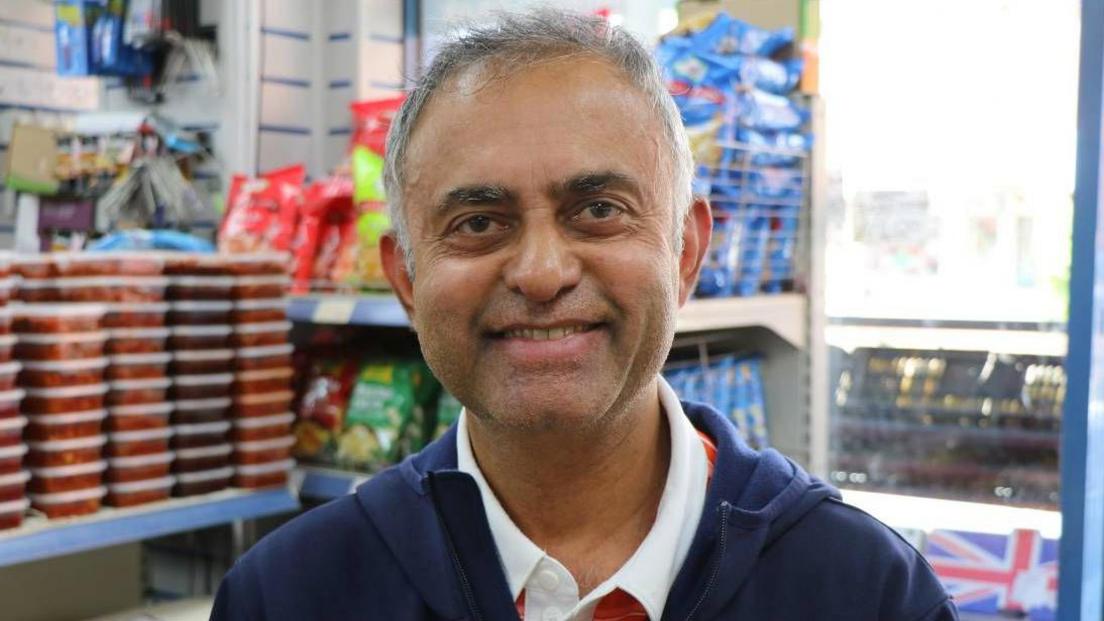
Dharmesh Patel said there was something "special" about the fruit, which to him had a sentimental value
There are hundreds of varieties but among the most popular are the Kesar and Alphonso.
Alphonso mangoes, which are "super sweet and very colourful" are widely regarded as the "king of mangoes", grocer Mr Pabari said.
However, he said in Leicester, where according to Leicester City Council, it is understood the majority of the 34% (about 127,000) of people who identify as Indian have Gujarati heritage - Kesar mangoes, which are grown in Gujarat, are particularly popular.
"It's part of [people's] culture. It's part of their home, family, what it was like growing up.
"For a lot of the older generation as well - this was their treat.
"They would come home from school and their mum, their grandmas would cut up the mangoes and they'd have them," he said.
Dharmesh Patel and his wife travel to Leicester from Rugby in Warwickshire regularly during the season to buy mangoes and other groceries.
To him, they're a taste of home, in India, and bring him a sense of pride.
"It makes us feel more Indian," he said.
"Every year, most years, we spend maybe £200 [on mangoes] for the season."
How are they eaten?
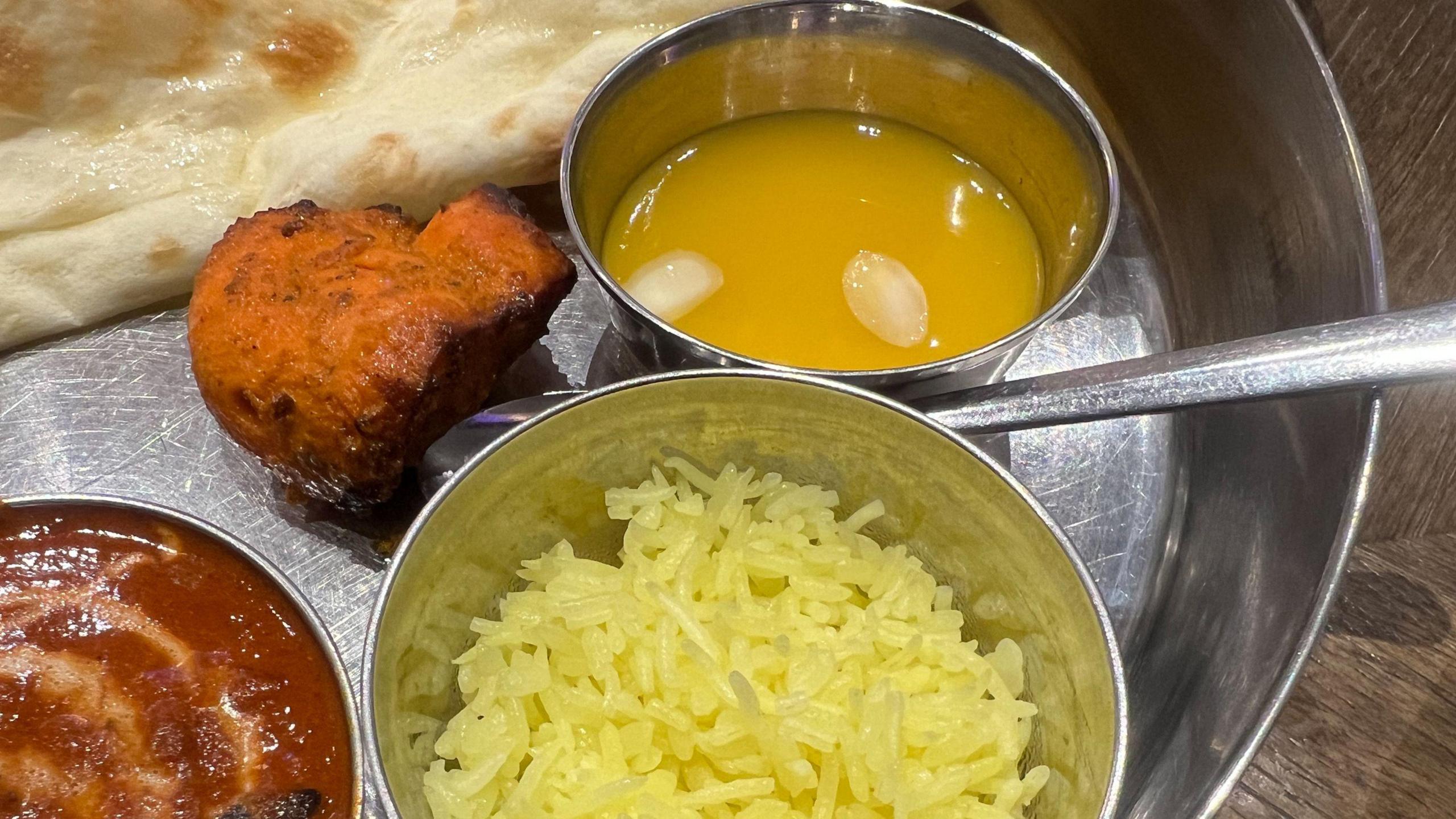
South Asian mangoes can be enjoyed in a pulp form as a dessert, as in this Indian thali - a meal made up of various components and served on a platter
The mangoes are enjoyed in many forms.
Some use them to make sweet dishes or treats, others enjoy the blended mango pulp in a custard-like form, but perhaps the most common way to eat them is by hand, by the slice.
The soft flesh of the fruit does not always lend itself to being cut into cubes and eaten with a fork.
In what is usually a messy but enjoyable experience, the slices of mangoes can be eaten by using your teeth to scrape off the flesh of the mango from its skin.
How much do they cost?
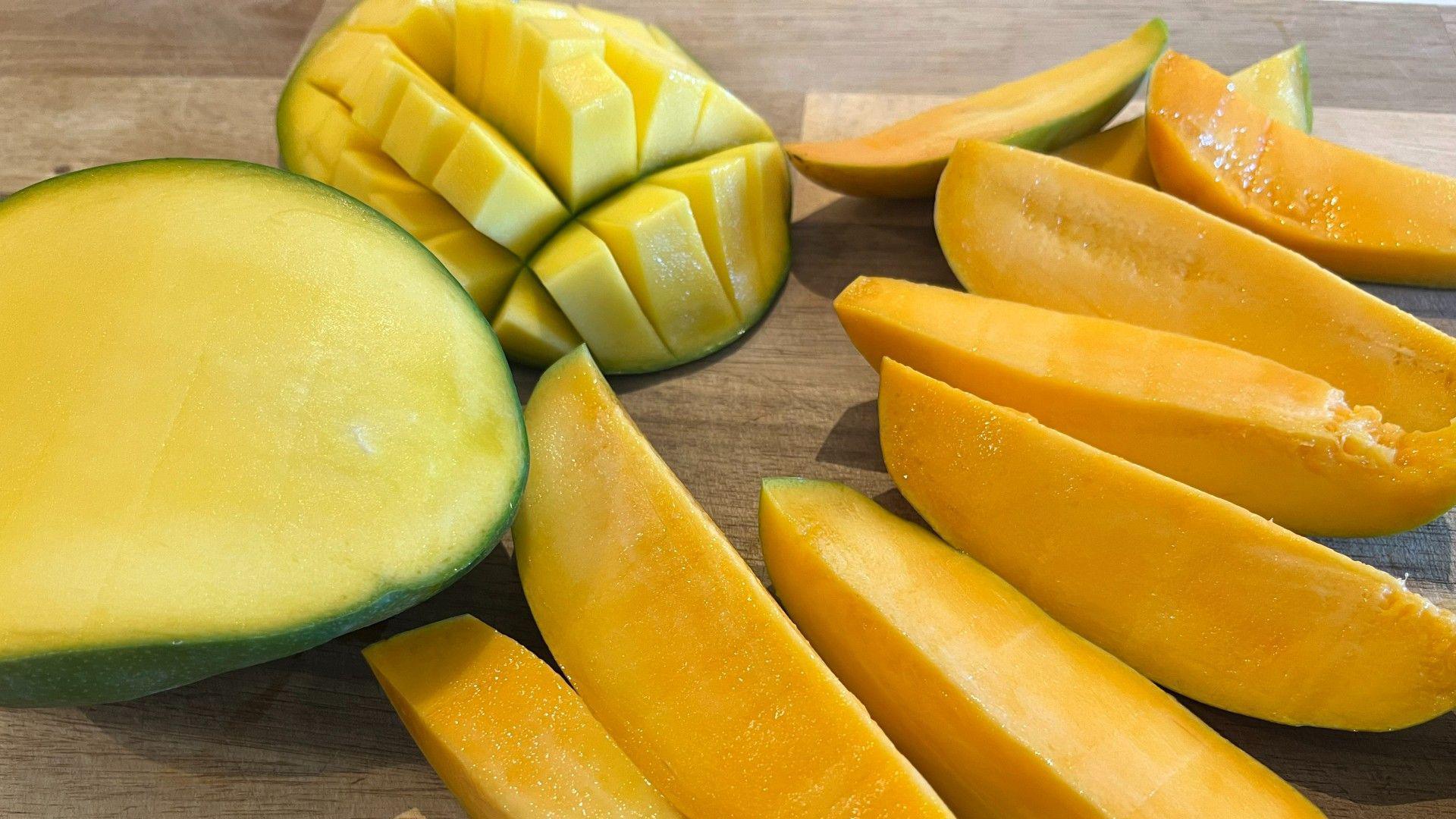
South Asian mangoes (right) usually lack the slightly tart taste of other mangoes (left), and are instead much sweeter
A box of 12 mangoes, depending on the variety, can cost up to £25 from an independent grocery shop.
Avid mango shopper Ms Bhave said the costs were often higher "at the beginning of the season", before the peak, when she said prices tended to drop a little.
The freight costs, the short window they're available and their quality make the fruits expensive, Mr Pabari said.
According to him, some businesses might even make a loss on mangoes but continue to sell them because they are so "special".
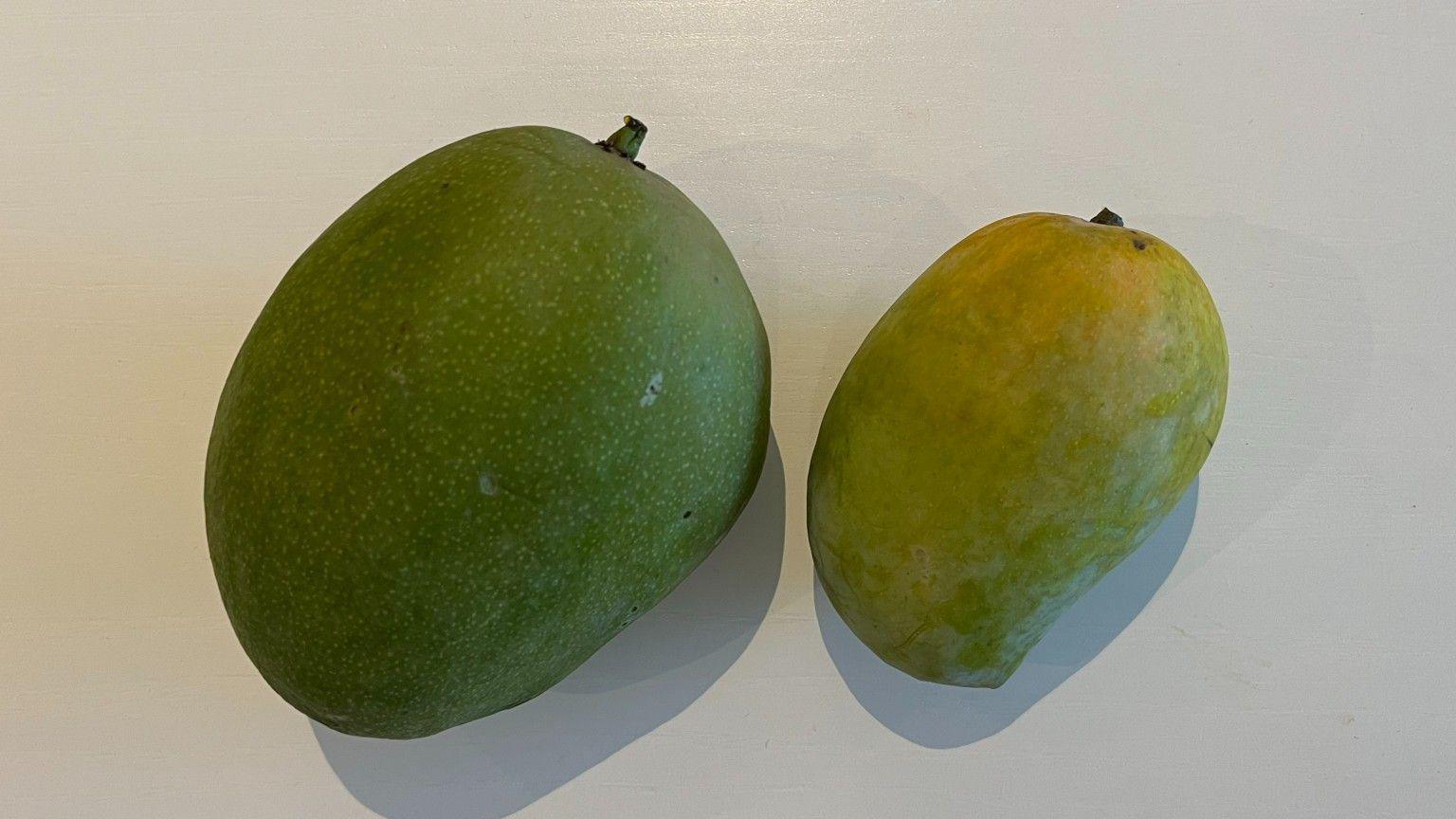
A supermarket-bought mango, which had no specific description (left), next to a Kesar mango, which is significantly smaller but was more expensive
The BBC found from a sample of larger supermarkets that stocked the fruit, online or in-store, that they were sometimes more expensive.
A box of 12 Kesar mangoes from an independent shop was £18.
Meanwhile, at an Asda store in Nottingham, a box of five of the same variety was £7.98, while individual mangoes labelled "tropical" with no specific details about their origin were 74p each.
An M&S store in the East Midlands was selling individual Kesar mangoes for £2 each, while a pack of two standard mangoes was £3.
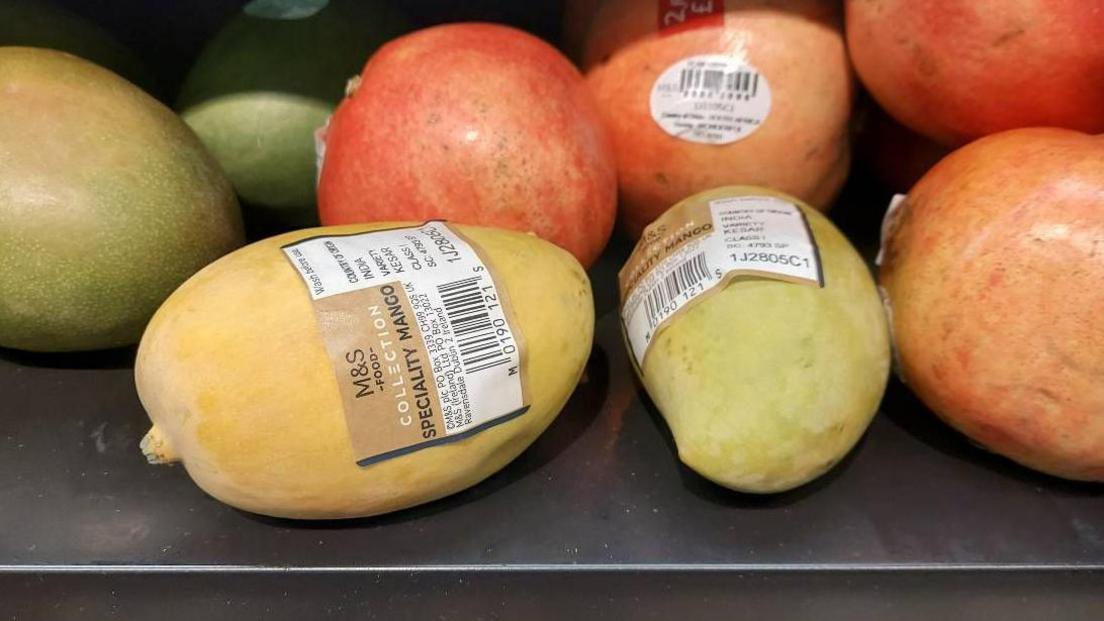
Although a rarity, South Asian mangoes occasionally make their way to the shelves of major supermarkets - but often at a higher cost
Mangoes making headlines
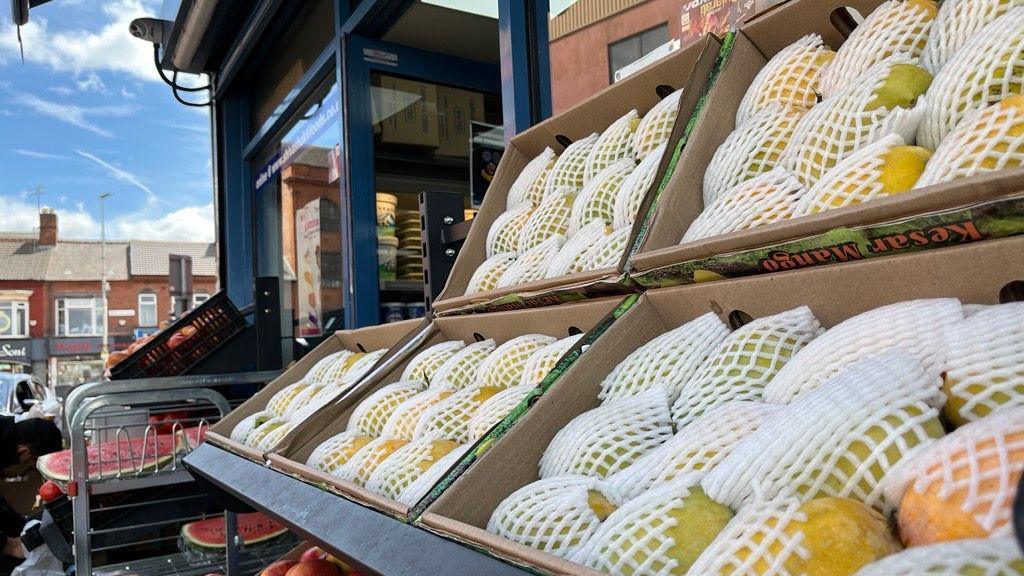
Shipments of mangoes from India to the UK were temporarily banned in 2014, to the disappointment of many
In 2014, a backlash against a ban on Indian mango imports made headlines in the UK.
Indian mango shipments to the European Union were suspended after harmful plant pests were found in a number of shipments.
At the time, UK wholesalers urged the government to reverse the ban due to the negative impact on businesses locally and abroad.
The ban also included other fruits and vegetables, but it was the mangoes that caused a stir - even prompting an e-petition to the government, external.
One UK importer called the ban a "knee-jerk reaction" to pest concerns.
Leicester's Belgrave Business Association - a local group of business owners - also said the fruit was "valuable" to the city's economy and would negatively impact retailers and wholesalers.
In 2015, the suspension ended earlier than expected after a European Commission committee voted to lift it.
And today, they remain a special part of South Asian food culture.
Get in touch
Tell us which stories we should cover in Leicester
Follow BBC Leicester on Facebook, external, on X, external, or on Instagram, external. Send your story ideas to eastmidsnews@bbc.co.uk, external or via WhatsApp, external on 0808 100 2210.
Related topics
- Published10 March
